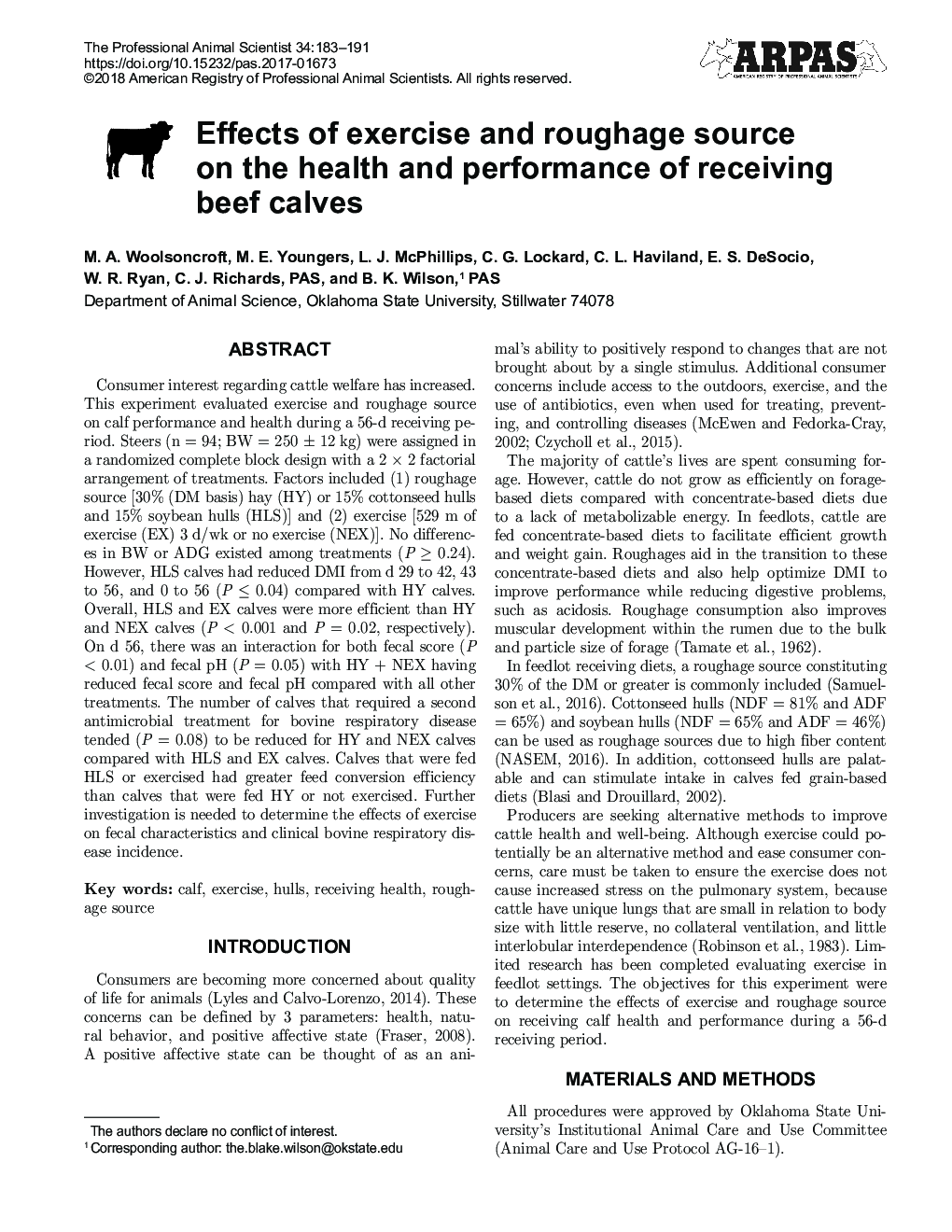| Article ID | Journal | Published Year | Pages | File Type |
|---|---|---|---|---|
| 8503684 | The Professional Animal Scientist | 2018 | 9 Pages |
Abstract
Consumer interest regarding cattle welfare has increased. This experiment evaluated exercise and roughage source on calf performance and health during a 56-d receiving period. Steers (n = 94; BW = 250 ± 12 kg) were assigned in a randomized complete block design with a 2 à 2 factorial arrangement of treatments. Factors included (1) roughage source [30% (DM basis) hay (HY) or 15% cottonseed hulls and 15% soybean hulls (HLS)] and (2) exercise [529 m of exercise (EX) 3 d/wk or no exercise (NEX)]. No differences in BW or ADG existed among treatments (P ⥠0.24). However, HLS calves had reduced DMI from d 29 to 42, 43 to 56, and 0 to 56 (P ⤠0.04) compared with HY calves. Overall, HLS and EX calves were more efficient than HY and NEX calves (P < 0.001 and P = 0.02, respectively). On d 56, there was an interaction for both fecal score (P < 0.01) and fecal pH (P = 0.05) with HY + NEX having reduced fecal score and fecal pH compared with all other treatments. The number of calves that required a second antimicrobial treatment for bovine respiratory disease tended (P = 0.08) to be reduced for HY and NEX calves compared with HLS and EX calves. Calves that were fed HLS or exercised had greater feed conversion efficiency than calves that were fed HY or not exercised. Further investigation is needed to determine the effects of exercise on fecal characteristics and clinical bovine respiratory disease incidence.
Related Topics
Life Sciences
Agricultural and Biological Sciences
Animal Science and Zoology
Authors
M.A. Woolsoncroft, M.E. Youngers, L.J. McPhillips, C.G. Lockard, C.L. Haviland, E.S. DeSocio, W.R. Ryan, C.J. PAS, B.K. PAS,
